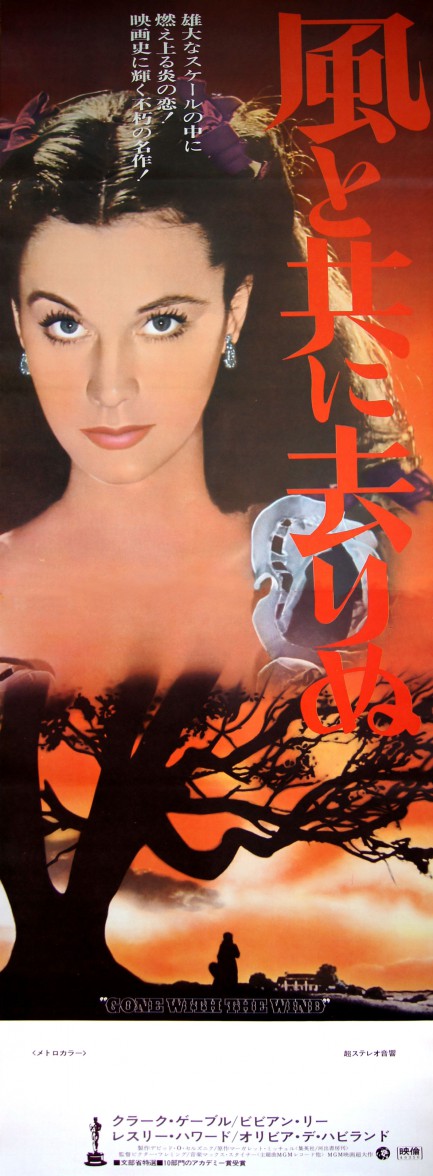| Vintage Pulp | Sep 4 2012 |


Above, a superb two-panel poster made in Japan for Gone with the Wind, with a great image of Vivien Leigh as the conniving Scarlett O’Hara. This film occupies a curious space in American culture, and a contentious one. Some people think it is an accurate portrayal of a genteel and elegant antebellum south in which slaves lived in more-or-less happy symbiosis with mostly kind masters; others think it’s a whitewash that glosses over the injustice, mass rape, and institutional savagery of a centuries-running crime against Africa.
Since the movie isn’t really about slavery, it probably shouldn’t be judged on its depiction of that terrible institution any more than Around the World in 80 Days should be judged on its depiction of ballooning. However, a swath of the American public does believe the film is broadly accurate, and it’s interesting how stubborn their notions are even after the appearance of more carefully researched depictions such as Stephen Spielberg’s Amistad and the ’70s miniseries Roots. While a tiny subset of house slaves might have led lives like those depicted in Gone with the Wind, hard evidence and serious scholarship have proven that the vast majority—inside and outside the house—endured horrific lives.
So that's where we stand, and really, reasonable people who've bothered to read a book or three on the subject stand there too. The ridiculous belief that slavery wasn't bad, or was even benevolent, will continue to hold sway over some people, and facts won't change their minds. That's just the way it goes these days. Speaking of factual depictions of slavery, you might try this underrated flick we talked about a few years ago. You can also check out some cool Gone with the Wind images here. The movie premiered in the U.S. in 1939 but did not play in Japan until years later—in fact, today, 1952.




































































